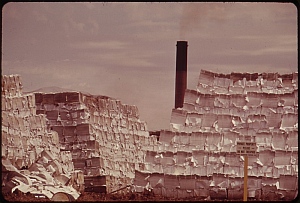 With the growth in tools available to offices for scanning, document scanning workflow is an important part of building a document management strategy. Whether you are using a formal document management system or are simply storing documents in folders on a shared hard drive the process of getting paper documents to the storage area is a key part of your scanning workflow.
With the growth in tools available to offices for scanning, document scanning workflow is an important part of building a document management strategy. Whether you are using a formal document management system or are simply storing documents in folders on a shared hard drive the process of getting paper documents to the storage area is a key part of your scanning workflow.
There are three main ways that this is commonly done. They depend upon what scanning hardware you have available and how you deploy it.
First. You can use network scanning to scan directly to a folder on your system. Network scanning is most commonly found from a network connected MFP (multifunction printer) which is setup for centrally accessing scanning. Users walk to the device, choose the location they wish to store to and scan their paper from the device. Depending upon how it is setup you may be able to pick the name for the file when it is stored or you may have to go into the folder from your PC and rename the file from the generic name the device provided.
Second. You use a scan workstation which has a dedicated scanner connected to a PC for users (or a dedicated operator in higher volume environments) to upload paper records into the storage area. The scanned documents are filed directly from the device to the storage location as it is possilbe to name the file as part of the scan process.
Third. Using a scanner located at the individual workstation a user scans the document and places it in the repository where it is to be stored. Small, distributed scanners suitable for lower volume use can be acquired for less than $300 and can be an efficient way for people to process their own paper. They can be especially valuable in busy transaction based operations where short documents need to be filed with each transaction.
Document scanning workflows can be simple or complex depending upon the nature of the documents you are scanning and the volume to be processed. Large volume operations can have scanners which run in the 100 page per minute range (and even faster in duplex) which can eat through massive amounts of paper. Smaller operations can handle single documents on a file as you go basis.
Designing a scanning workflow requires understanding the need, volumes, desired outcome and types of documents. It does not have to be a complex process but it should be defined clearly with good indexing criteria so you can easily find the records when they are needed.
How does your office deal with its scanning needs? Is there a better document scanning workflow for your office? How are the resulting files stored and indexed?
Lee K
Photo credit: Wikimedia Commons



